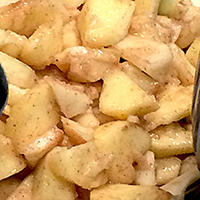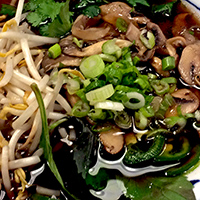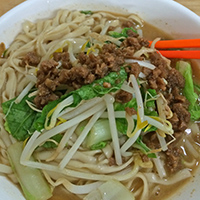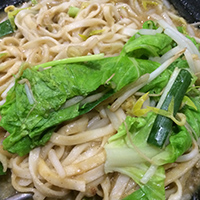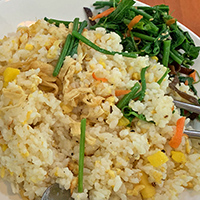OBJECTIVES By the end of this session you will be able to:
|
Tasks for this session
Before you come to class for our sixth class meeting:
Read
Read pages 146-186 in Building Powerful Community Organizations by Michael Jacoby Brown (2006) 1h 20 minutes.
Tasks
Activity One
Participate in our class, either by attending the class in the classroom, or meeting with the class online using Zoom. We will not use all 3.5-4 hours of class time in the class meeting, nad you should participate in the discussion board for an hour or two if we meet for only 90 minutes to two hours and 30 minutes.
Activity Two
You should be working on the second experiential learning assignment, where you contact the most influential persons you know (three of them) and ask them about their activities to make the world a better place, ask under what circumstances they might help you if you came to them for help working on a cause, and ask them what they look for when they decide to use their time/money/influence to support a cause. You should devote about thirty minutes to that task, if you follow my advice on time use.
Activity Three
You should be active in whatever group you have joined this semester (or become more involved with) so that you can get to know that group in greater depth and use the group for in-class exercises we will do about recruitment in the sixth session.
Activity Four
You should devote some time to figuring out who your political adversary or enemy is, so that you can begin doing background research on them and find some issue or cause where you and they share a passion or opinion, and you can prepare a scenario or communication where you supportively collaborate with them. I recommend you give about 30 minutes to that task this week.
Activity Five
In the fourth session I suggested (as activity four) that you spend about an hour watching videos about Saul Alinsky. If you did not choose to watch the documentary The Democratic Promise: Saul Alinsky & His Legacy, I want you to watch it this week (it is 56 minutes in length, and can be viewed on Youtube). If you did watch that documentary already, use an hour that you have to learn more about Saul Alinsky. There were several other links to recordings of him available in the Fourth Session Guide for this class. You could also read the Open Culture summary of his thirteen Rules for Radicals, The Citizen’s Handbook presents Alinsky’s rules as a list of eleven. The dangerous lunatic and neo-fascist radio personality John Loeffler describes Alinsky (he's not a fan) and presents a summary of Alinsky's ideas from a hostile point-of-view. Finally (I've saved the best for last), I can strongly recommend the Vox article by Dylan Matthews from back in 2016: Who is Saul Alinsky, and why does the right hate him so much?
Activity Six
I would like you to spend some time watching a feature film that involves a portrayal of leadership and political activism or social justice activism. You should choose from the following six films:
- Amazing Grace (2006). A biographical movie about politician William Wilberforce and his work to end the British slave trade
- Lincoln (2012) A biographical movie about Abraham Lincoln and the efforts of his administration to see the 13th Amendment passed through Congress.
- Erin Brockovich (2000). A legal assistant helps a community organize to fight a power company that has poisoned the community’s water.
- Gandhi (1982). A biographical movie about the Mahatma Gandhi and the struggle for South Asia’s liberation from British colonial rule.
- Milk (2008) A biographical movie about Harvey Milk, the first openly gay politician to be elected in California (the USA?), and a martyr to the cause for gay rights.
- Selma (2014). A biographical movie about Martin Luther King and the civil rights movement’s 1965 campaign to win passage of the federal Voting Rights Act.
You ought to watch the film with someone else, preferably with a classmate from this class or someone studying social work, or if you can’t do that, you could watch the film with a friend or family member.
All these films are available in our Brookens Library, and they are usually available in local libraries as well. All these films are rated at least 7.0 at the IMDB (I generally don’t recommend or use any films rated below 7.0), and several of these films won awards recognizing the high quality of the film.
Activity Seven
Take the third and final specifically assigned course from the United States Institute For Peace (you must also take two optional courses, but you can take any course you like for those final two courses). The course you must take is “Nonviolent Action: Micro-Course”, and expect this to take about three hours of your time.
Session Time Budget
3h 30m |
Canvas Discussion Boards |
1h 30m |
Reading Brown, pp. 146-186 |
30m |
Assignment related to 2nd experiential learning, contact and interview some of your most influential friends/contacts. |
1h |
Assignment related to 3rd experiential learning, be active in a group |
30m |
Work on finding a political adversary and studying what you might have in common with that person. |
1h |
Read about Saul Alinsky and watch the film The Democratic Promise: Saul Alinsky & His Legacy (if you did not already watch it last week) |
2h |
Watch any one of the six feature films about leadership |
| 3h | Go to the USIP website and take the course Nonviolent action micro-course |
Discussion Board Questions (Activity One)
Go into Canvas, log in, and respond to the discussion questions for this session.
These are:
DQ 5-1: Check In
Check in for the fifth week of the semester. Tell us what is going on. Share something you have done in the recent days or weeks that you feel good about.
DQ 5-2: Organizations that help macro practice
The fifth activity in session four was to learn about one of these groups (devoting about 60 minutes to what you could learn from the web page). In this discussion thread, share what you learned from the 60 minutes you spent learning about the organization or the time you read or watched materials they provided. These are the 13 recommended organizations, but you are free to describe any other sort of group that helps social workers who do macro practice:
- The Center for Community Change
- The Industrial Areas Foundation.
- The Gamaliel National Network
- Macro Social Work (MacroSW)
- The Association for Community Organizations and Social Action (ACOSA)
- The Association of Government Relations Professionals (AGRP)
- The Center for Association Leadership (ASAE)
- The National Association of State Lobbyists (NASL)
- The Association of Fundraising Professionals (AFP)
- The American Public Human Services Association (APHSA)
- The Network for Social Work Managment
- The Social Welfare Action Alliance
- The National Association of Non-Profit Professionals (NANPP)
DQ 5-3: Saul Alinsky
The fourth and fifth sessions ask you to watch documentaries and read articles or web pages that expose you to Saul Alinsky and his ideas. Having encountered Saul Alisnky, what are some of your impressions of him? If you were supposed to give a short description of him and his ideas, what would you say? He is rather controversial. What are your understandings of why he is controversial, and how do you feel about the controversy?
DQ 5-4: Saul Alinsky’s Rules
Discussion Question 5-4: Saul Alinsky
Choose any one of the “rules” that Alinsky proposed for radicals, and explain what it means, and say something about how it would be applied in a hypothetical situation.
- Power is not only what you have, but what an opponent thinks you have.
–If your organization is small, hide your numbers in the dark and raise a din that will make everyone think you have many more people than you do.
- Never go outside the experience of your people.
- Whenever possible, go outside the experience of an opponent.
- You want to cause confusion, fear, and retreat.
- Make opponents live up to their own book of rules.
- “You can kill them with this, for they can no more obey their own rules than the Christian church can live up to Christianity.”
- Ridicule is man’s most potent weapon.
- It’s hard to counterattack ridicule, and it infuriates the opposition, which then reacts to your advantage.
- A good tactic is one your people enjoy.
- “If your people aren’t having a ball doing it, there is something very wrong with the tactic.”
- A tactic that drags on for too long becomes a drag.
- Commitment may become ritualistic as people turn to other issues.
- Keep the pressure on.
- Use different tactics and actions and use all events of the period for your purpose.
- “The major premise for tactics is the development of operations that will maintain a constant pressure upon the opposition. It is this that will cause the opposition to react to your advantage.”
- If you push a negative hard and deep enough it will break through into its counterside (Links to an external site.).
- When you are attacked, you can usually turn that attack into a positive for your side.
- Major premise for tactics is the development of operations that will maintain constant pressure upon the opposition.
- The threat is more terrifying than the thing itself.
- Pick the target, freeze it, personalize it, polarize it.
- Don’t try to attack abstract corporations or bureaucracies.
- Identify a responsible individual.
- Ignore attempts to shift or spread the blame.
- The price of a successful attack is a constructive alternative.” Never let the enemy score points because you’re caught without a solution to the problem.
DQ 5-5: Grand Challenges
You are familiar with the Social Work Grand Challenges, and you may have some opinions about one or more of the Grand Challenges. Can you please pick one of those Grand Challenges and identify a group or organization that is a leader in trying to achieve the goals of the Grand Challenge? Explain what you know about that group or organization, and why you think it is a leader in working to solve or address the problem.
DQ 5-6: Socializing Question about food.
This class is using a food motif in the decorative column to the left of the content in each session guide. Let’s talk about food. What are some of your favorite foods? What was the best thing you ate in the past week or two? Do you have favorite restaurants around where you live? Tell us about those.
DQ 5-7: Look at the model dialog on pages 157-165 and the debriefing on page 166. As you read that dialog, what did you learn or observe about the techniques of doing a good one-on-one recruitment conversation?
DQ 5-8: What do you think Brown means by ‘recruiting for a task’ (explain in your own words what he explains on pages 172-179). Do you think this is likely to be an effective way to recruit people to join an organization, and what makes you think it is likely to be effective or makes you doubt that it could be effective?
Lecture on Assignments; the Learning Notebook
Here is what ought to be in your learning notebook:
1) your writing about the five individual experiential learning assignments. Most of these take about ten hours (or slightly less) of action and activity, and then a few hours of reflection and two or three hours of writing. In two or three hours of writing I think you can write between 500 and 1,600 words about each of these activities. Write about the process. Write about what was going on in your heart and your mind as you were doing the activity. Write about what you observed and what happened. This is not formal writing. It is more like journal writing.
- Writing about your experience with the social event with three persons whom you don't know well.
You need to describe what you did, and how you felt about it, and what you learned from it. You especially need to reflect on what issues of common concern came up at the meeting or event, and what you did to get people to talk about those issues of common concern. My expectation is that you will spend about eight hours to ten hours doing this experiential learning activity, and then spend about one or two hours writing about it. It is fine with me if you spend less time, but please do not make this a major effort that takes up much more time than I am suggesting.
- Writing about assessing powerful persons in your social networks (in essence, an examination of how your social capital includes persons who are relatively powerful, and what they tell you about their experiences in supporting positive causes).
You should write about the sort of powerful persons you know, or the persons you know who know powerful persons, and you should write about what you told these persons about this course and why you are approaching them, and then share the answers you get to your three questions: A) have they ever used their wealth or power to make a difference in the world (and what was it they did, and what did they tell you about it?); B) is it possible that if you came to them with an idea for something they could do to make a positive difference in the world, they might help the cause or help you? (what do they suggest or how do they answer that question?); and C) what sort of appeals are most likely to win their support (what do they want to do, and what are the best ways to get their support for things that they want to do?). You only need to ask these questions of the three most powerful or well-connected or wealthiest persons you know; and for the three persons you don’t know well, but whom you might approach or meet if someone else you know introduces you, you can just speculate about what they might say or how you might approach them.
I assume this will take you about four hours (at most) to have conversations with the three persons, and then I think it may take you four or five hours to think about what they said to you, and write down the main points, and then reflect on what you have learned.
- Spend at least eight to ten hours working for a cause (ideally more time—up to 15 hours), or volunteering for a group that works for improvement in society, or engaging in a civil society group. Then, write about your experience. What group did you get involved with, and why? What did you observe was going on with this group? Based on what you are learning in this course, how do you evaluate what you saw going on with the cause or agency that you got involved with? In addition to approximately ten hours of your volunteering time for this group (or attending meetings, or whatever), you probably need a few hours to write about this.
- Spend some time considering who is “against you” in general, in terms of political action or social causes. Find someone who is in opposition to you on a range of issues. Spend some time researching how this person opposes you, or figuring out why you are repelled by this person. Then, spend some time finding one issue or cause where this person is potentially your ally. Write about the person, why you are characterizing them as being generally opposed to your views, and how you found an issue where you agree with the person and think there could be a way to work as allies. Then, outline a plan for how you could help the person, or get their help, for a cause where you would be allies rather than adversaries. If you have time and it seems plausible, actually write to the person (or somehow contact them) and put some of your plan for collaboration into effect. Write about this. I think this will take about seven to nine hours to do, and you will want to spend two or three hours writing about it.
- Engage in advocacy for human rights. Tell about how you found an opportunity to get engaged in human rights advocacy. Tell about the specific person or cause that attracted your attention. Share the letter or editorial or any other written communication you created as part of your advoacy (this might be a letter you write for an Amnesty International campaign to protect a specific person). Write about what you put in the letter and how you felt about writing the letter. Tell how it felt to use the letter or editorial or whatever you wrote or did. Do you think you will make time in your life to occassionaly advocate for human rights?
2) If you get involved in a group project, you could include writing about your work on your group project. Write about the process and also what you actually do. Most importantly, consider what you learn from the experience, and how your learning illustrates ideas you have encountered in the reading or discussion taking place in our course. Again, this is journal writing, and not formal writing. I expect about 1,000 words, which ought to take you a few hours. It is best to write short paragraphs now and then throughout the semester, and then write an actual essay about it toward the end of the semester. But, in fact, you probably do not need to do a group project, so you probably do not need to write anything about a group project.
3) Your grand challenge paper. This is the only formal writing in the class. This paper ought to be included in the learning journal.
4) Final reflection paper. This goes in your learning journal.
5) You ought to find articles or news items and paste them into your learning journal (or at least paste the links to them into the journal). For these, you ought to write an annotation in which you give your own commentary on the event or item or idea that caught your attention in the article. What I most like to see are things such as your critical analysis of the news item... what is going on and what you think ought to be different. It is also gratifying if you can relate these items you collect to things we are learning in the class. I expect at least six or seven of these in your journal, but if you like collecting these, go ahead and collect more. if you collected a couple each week, you could have about 20 by the end of the semester in your learning journal, and that would be fine, but I do not want you to spend too much time on it, so please do not go much over 20 if you really enjoy collecting essays. I expect you to have a least a few collected by the seventh session when you first turn in your journal.
Look for articles that relate to policy practice, community practice, or administrative and management practice in social work. One easy place to find such articles is in the “People Making a Difference” section of the Christian Science Monitor.
6) I do not expect this of you, but I am going to recommend that if you do take class notes, or just have some ideas about macro practice that you want to collect in this class, that you can collect those in your learning journal. You will learn more and remember more if you write down ideas that you have, and it would be a good idea to set aside ten or twenty minutes each week for writing about what you are reading in the assigned readings or what you are thinking about macro practice skills as you attend classes.
From the first session through the thirteenth session there will be thirteen sessions to work on most of this stuff (I expect most students will just be working on finishing their Grand Challenge Paper and reflection paper in the fourteenth session and thereafter). If the five individual experiential learning projects and writing about them will require 50 hours in total, and the group project will require 20 hours, and the Grand Challenge Paper will require 16 hours before the fourteenth session, and reading and collecting articles will require 10 hours, that is a total of 96 hours, and that works out to about 7 hours and half hours per session. So, the reading in this course is relatively light; generally two hours or less per week. Most of your time outside of class should be used doing the activities and writing about things for the learning notebook.
There is a guide to writing in the class that shows what would go into a notebook.
Interesting Stuff To Explore (optional stuff)
As we watched the documentary on Saul Alinsky in the fourth and/or fifth sessions, you might enjoy looking over some of these websites that tell more about him or the places and organizations mentioned in the documentary:
Woodlawn (the community in Chicago where Saul Alinsky worked as a community organizer when he was starting out).
The Industrial Areas Foundation (the organization Saul Alinsky started).
Mike Miller in the Winter 2010 issue of Dissent offers an article arguing in favor of community organizing: Alinsky for the Left: The Politics of Community Organizing.
The Direction Action & Research Training Center (DART).
And, just for general interest, this article about the soical work labor force (from November 2016, fairly recently), is worth a look. Where are all the Social Workers Going? by Katherine Barrett & Richard Greene, November 17, 2016 issue of Governing: The States and Localities.
I highly recommend reading Eric Wadud’s Section 5 of Chapter 14 (Core Functions of Leadership) in the Community ToolBox (“Building and Sustaining Commitment”) provided by the University of Kansas.
You might enjoy Tucker Fitzgerald’s polemical screed against Nicholas Kristof’s editorial about Liberal intolerance.
You may want to study the 13 Rules for Radicals. These are listed and explored by Josh Jones at Litmus, and in the Citizens Handbook, and John Loeffler presents these at Steel on Steel.
Come to the next class ready.
Come to class ready to practice recruiting someone to join a group.
Come ready to talk about the door-to-door approach and the longer one-on-one visit. What are important techniques to use when recruiting people?
Come ready to talk about Saul Alinsky and his ideas about organizing.







